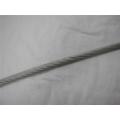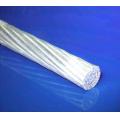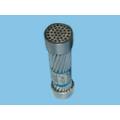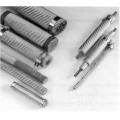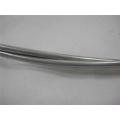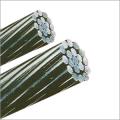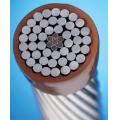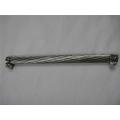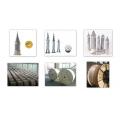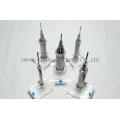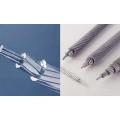
ApplicationThis standard covers aluminum stranded conductors aluminum-clad steel reinforced which could withstand high tensile load to be used mainly for overhead transmission lines, overhead distribution lines.ConstructionThe center wire or wires are of aluminum-clad steel and the outer layer or layers of aluminum.Mechanical AdvantagesDepending on the stranding configuration and conductor size, ACSR/AW weighs three- to six-percent less than its ACSR counterpart. This feature is converted into savings in line design and construction costs.In most cases, the strength-to-weight ratio of ACSR/AW conductors will surpass galvanized or aluminized cores. In fact, standard ACSR conductors having "B" and "C" galvanized or aluminized cores have strength-to-weight ratios which are considerably lower than those of ACSR/AW.In addition to the above mechanical consideration, the excellent, time-tested fatigue resistance of ACSR/AW has been demonstrated in installations in both marine and industrial environments.Alumoweld Adds ValueAlumoweld's high tensile strength and thick pure aluminum cladding add value to your ACSR. The cladding is so thick that approximately 25 percent of the cross section of an Alumoweld wire is aluminum. This amount of additional aluminum added to the conductor increases its conductivity and ampacity; and significantly improves protection against corrosive attack. Alumoweld has one-third the conductivity of an equal-sized Alloy 1350 (EC grade) aluminum wire. The result is a conductor with lower power losses.Improved EfficiencyThe lower A. C. resistance of ACSR/AW provides savings to the user in two ways: lower demand costs and lower operating costs. This reduced resistance is related to conductor configuration and to the increased cross-sectional area of aluminum resulting from the substitution of Alumoweld for ordinary galvanized or aluminized core wire.Two complementary factors operate in ACSR/AW to achieve lower A. C. resistance. First, the thick cladding contributes an extra cross-sectional area of pure aluminum to facilitate current flow.This also raises the ampacity. The second way Alumoweld core wire reduces A. C. resistance is the lowering of magnetic losses. While it has the same diameter as galvanized or aluminum wire, Alumoweld has significantly less steel in its composition than in ordinary galvanized wire, thus lowering magnetic losses.

